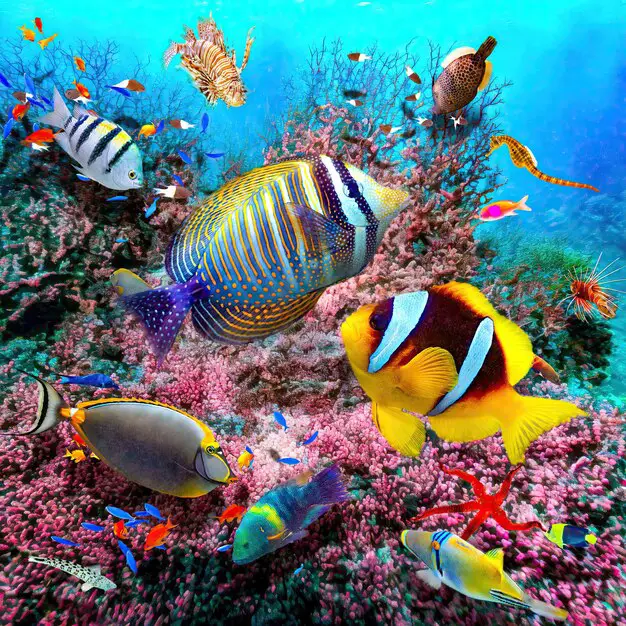Unveiling the Mysteries of the Environmental Psychology Abyss: Top 20 Deep Ocean Organisms


Page Contents
Beneath the Surface of the World’s Oceans
Beneath the surface of the world’s oceans lies a realm of darkness and mystery, where extraordinary creatures have adapted to survive in the extreme conditions of the deep sea. The deep ocean, characterized by crushing pressure, frigid temperatures, and perpetual darkness, is home to a diverse array of organisms that defy our preconceptions about life. In this article, we embark on a fascinating journey to explore the top 20 deep ocean organisms that showcase the incredible adaptations and resilience required to thrive in one of Earth’s most challenging environments.

The interlink between Environmental Psychology and Ocean Organisms
The interlink between environmental psychology and ocean organisms is a critical nexus that explores the psychological dimensions of human interactions with marine environments and their diverse inhabitants. Environmental psychology sheds light on how individuals perceive, value, and emotionally connect with ocean ecosystems, influencing attitudes and behaviors towards marine conservation. Understanding the psychological aspects of ocean-related experiences, such as awe-inspiring encounters with marine life, can inform strategies to foster a sense of stewardship and responsibility for preserving the health of our oceans.

Additionally, environmental psychologists delve into the impact of environmental degradation on human well-being, recognizing that a thriving marine ecosystem is not only crucial for biodiversity but also for the psychological and emotional health of individuals connected to the seas. By recognizing and addressing the intricate interplay between human psychology and the oceans, environmental psychology contributes to the development of sustainable practices that promote the long-term well-being of both individuals and marine ecosystems.
Unveiling the Mysteries of the Abyss: Top 20 Deep Ocean Organisms


- Giant Squid (Architeuthis dux):The giant squid, a legendary denizen of the deep, is a colossal cephalopod that can grow up to 43 feet in length. With enormous eyes adapted for low-light conditions, the giant squid is a master of stealth in the abyssal depths.
- Anglerfish (Melanocetus johnsonii):The anglerfish is a mesmerizing creature known for its bioluminescent lure dangling in front of its jaws. Adapted to low-light conditions, this deep-sea predator uses its glowing appendage to attract prey in the inky darkness.
- Deep-Sea Dragonfish (Grammatostomias flagellibarba):Sporting elongated jaws and bioluminescent photophores along its body, the deep-sea dragonfish is a captivating predator that roams the depths, using its specialized features to attract mates and prey.
- Dumbo Octopus (Grimpoteuthis spp.):Resembling the beloved Disney character, the dumbo octopus gracefully glides through the deep ocean with ear-like fins. These cephalopods are adapted to cold, high-pressure environments and are among the deepest-living octopuses.
- Barreleye Fish (Macropinna microstoma):With its transparent head and upward-facing tubular eyes, the barreleye fish is a unique deep-sea inhabitant. This adaptation allows it to look directly overhead for potential prey while navigating the depths.
- Blobfish (Psychrolutes marcidus):Known for its gelatinous appearance, the blobfish inhabits the deep sea at depths of up to 4,000 feet. Its unique physiology allows it to withstand the intense pressure of the abyssal environment.
- Deep-Sea Siphonophore (Praya dubia):The deep-sea siphonophore is a mesmerizing colonial organism that drifts through the ocean, comprising a chain of specialized individuals with different functions, such as feeding and reproduction.
- Vampire Squid (Vampyroteuthis infernalis):Despite its ominous name, the vampire squid is a small cephalopod that inhabits oxygen-deprived zones of the deep sea. It possesses light-producing organs and a web-like cloak that gives it an otherworldly appearance.
- Gulper Eel (Eurypharynx pelecanoides):The gulper eel, with its distensible mouth and large stomach, can swallow prey much larger than itself. Adapted to the deep-sea environment, this eel is an intriguing example of the extreme adaptations required for survival.
- Deep-Sea Jellyfish (Atolla wyvillei):The deep-sea jellyfish, also known as the “alarm jellyfish,” possesses bioluminescent capabilities. When threatened, it produces a stunning light display to attract predators to the potential threat rather than itself.
- Hatchetfish (Sternoptyx diaphana):The hatchetfish is a small, deep-sea fish with distinctive hatchet-shaped bodies. Their silvery, bioluminescent patches help them camouflage against the ambient light filtering down from the surface.
- Gorgonian Octocoral (Iridogorgia magnispiralis):Found in the dark depths, the gorgonian octocoral is an elegant branching coral that captures zooplankton with its polyps. Its intricate structure provides habitat for various deep-sea organisms.
- Deep-Sea Lizardfish (Bathysaurus ferox):The deep-sea lizardfish is a fearsome-looking predator with sharp teeth and a voracious appetite. Adapted to the pressures of the abyss, it lurks in the darkness, ambushing unsuspecting prey.
- Deep-Sea Hydrothermal Vent Worms (Riftia pachyptila):Thriving near hydrothermal vents, these tubeworms have a symbiotic relationship with chemosynthetic bacteria, converting chemicals from the vents into energy in the absence of sunlight.
- Dandelion Siphonophore (Rhodaliidae):Resembling a delicate dandelion, this ethereal siphonophore drifts in the deep-sea currents, capturing small prey with its numerous tentacles. It showcases the beauty and fragility of deep-sea life.
- Deep-Sea Amphipod (Alicella gigantea):The deep-sea amphipod is a shrimp-like crustacean adapted to extreme pressure conditions. Some species have been found at depths exceeding 7,000 meters in the Mariana Trench.
- Basket Star (Gorgonocephalus eucnemis):The basket star, an intricate deep-sea relative of starfish, unfurls its branching arms to capture plankton and small organisms in the deep-sea currents.
- Deep-Sea Skate (Bathyraja abyssicola):With a cartilaginous skeleton, the deep-sea skate is a relative of rays and sharks that navigates the abyssal depths. It showcases the adaptability of elasmobranchs to extreme environments.
- Deep-Sea Ctenophore (Mnemiopsis leidyi):The deep-sea ctenophore, also known as a comb jelly, possesses bioluminescent properties. Its delicate, transparent body refracts light, creating a mesmerizing display in the dark depths.
- Deep-Sea Cone Snail (Conus spp.):The deep-sea cone snail is a predatory gastropod known for its venomous harpoon-like tooth. These snails navigate the ocean floor, preying on other marine invertebrates with their specialized hunting mechanism.

Conclusion
The top 20 deep ocean organisms provide a glimpse into the remarkable adaptations and diversity of life that thrives in the mysterious depths of the ocean. Each of these fascinating creatures contributes to the intricate tapestry of the deep-sea ecosystem, showcasing the resilience and ingenuity required to survive in one of Earth’s most extreme environments. As scientific exploration of the deep ocean continues, these organisms serve as ambassadors, unlocking the secrets of the abyss and inspiring awe and wonder for the incredible diversity of life that remains largely unexplored beneath the waves.







